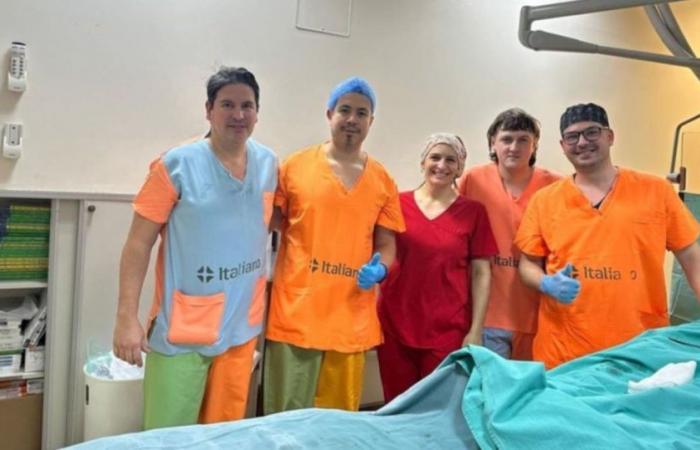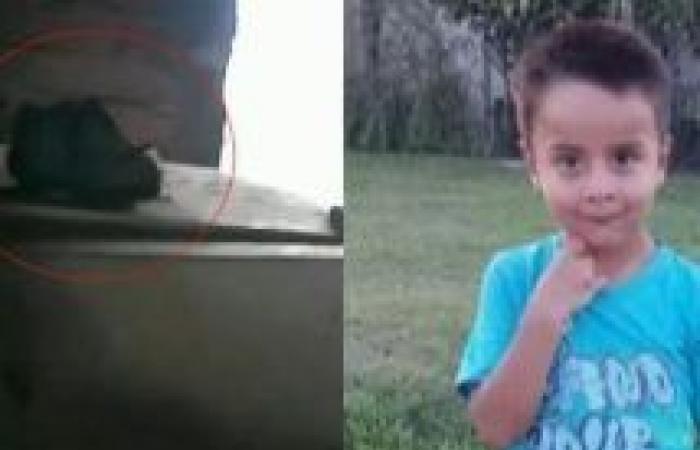Eduardo Tejado is a neurosurgeon and together with his colleague Matías Sein, he performed the first endovascular brain aneurysm surgery in an awake patient. The intervention was carried out at the Italiano hospital in La Plata and marked a milestone in modern medicine, due to the complexity of the pathology that is usually fatal and because it was not necessary to open the brain and to be able to be in contact with the lucid patient to monitor their sensations and emotions. In less than 24 hours, the 43-year-old man had already been discharged.
It was his first experience in the operating room, but he had been studying it for years, from a training trip to France, where he encountered a different world in the area of neurosurgery. Until the time came at the Italiano La Plata hospital where he obtained the necessary technology to do it. The intervention, this litmus test for him, was the first. The patient was conscious during the 45 minutes that the operation lasted. Then he “walked to therapy,” the doctor said, where he stayed for a few hours and in less than a day he went to his house.
For Eduardo, the experience was extremely mobilizing, personally and professionally, and Today he thinks that he would like this procedure to be applied in Roca, a city close to his affections. His lifelong friend lives there. Sergio Romero, who studied with him at the University of La Plata. «I have been going to Roca since I was a child. It would be great to be able to use an angiograph for vascular pathologies. Being able to travel and resolve patient pathologies there would be good. “How can I not love that city if I bathed many times in the Canalito,” he said.
The neurosurgeon with his team made up of his peer, plus the anesthetist Camilo Vera García and the professionals Sabrina Scaglione, Gabriela Giardine and Emilio Camejo faced a challenge. A patient arrived who stated that he was losing vision in one eye and had a severe headache. The diagnosis was a cerebral aneurysm “in the carotid artery that is in the neck but reaches the brain, behind the eyes. That artery can become clogged and that’s what happened to his brain. It is as if you had a balloon in the artery that if it breaks can cause a brain hemorrhage,” explained the professional.
It was at that moment, faced with the severity of the condition, that the team decided after talking and evaluating the patient to apply this technique. They were going to operate on him, but while he was awake. «You enter inside the arteries, navigate through the brain and place a special stend that covers every artery and reconstructs the entire segment of the artery. It is like a 3 millimeter ball that you inflate and position in the artery. We have a large anesthesia team that knows how to handle these types of patients who do not need to go to sleep but they monitor everything. They give him a sedative to make him calmer and manage complications. We do a psychological profile to see what type of patient he is and from that determine the drug that is given to keep him calm but awake and conscious at all times. What we need is for him to stay calm and not move. That is fundamental,” explained Tejado.
In the previous steps, the man stated that he was afraid of general anesthesia. It was all said. «We explained the procedure to him and he accepted. As time went by we asked him how he was doing and he told us that he didn’t feel any pain. We were inside his brain and he was calm and told us that he didn’t feel anything. That was essential because what is necessary is that the patient not move while we do the surgery because we were touching his cerebral arteries and a slight movement can cause serious complications,” added the neurosurgeon.
It was 45 minutes of tension, but finally the patient walked out to therapy where he spent a couple of hours and then was discharged. «He went to bed and talked to people as if nothing had happened. “I was scared but happy because we resolved a situation that could have been fatal for him,” the doctor reflected.
Tejada is 50 years old and has just trained in traditional neurosurgery in which “the procedure was to open the skull and you spent at least 8 hours fighting. Add to that the fact that the patient was super anesthetized and then spent entire days also anesthetized and that the postoperative periods were terrible. We are talking about months lying down to recover. “This is something else,” he described.
«You think that we navigate through the arteries of the brain. She wakes up and asks me how she is. He is very strong. The first thing I felt was amazement, that was science fiction to me. “I couldn’t believe what I was experiencing,” the doctor revealed, remembering that day.
Pathologies of the future
The neurosurgeon, Eduardo Tejado, looks forward and according to his research and experience, he forcefully maintained that By 2030 the main causes of death will be myocardial infarction, stroke and cancer. And the ages of patients suffering from pathologies within their specialty are increasingly younger.
«When I started the word stroke it was talking about older people. But when I started to study it is the pathology of the future because we are seeing more and more young patients. In 2030 it will be equal to heart attack in mortality. Statistics say that in 2030 the three pathologies that will remain will be stroke, heart attack and cancer. People are living longer but they are increasingly living in stressful situations at younger ages. They tell you that you have to stop but the system won’t let you stop. It’s an increasingly accelerated world that won’t let you stop,” she said.





